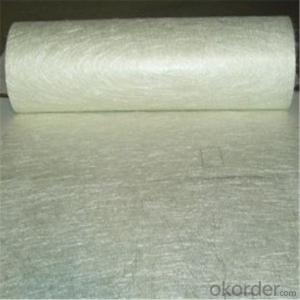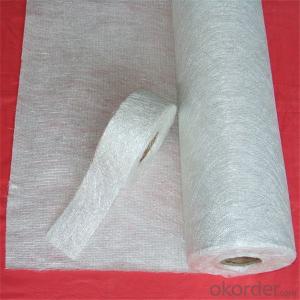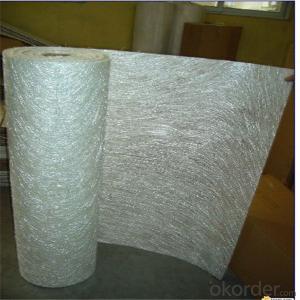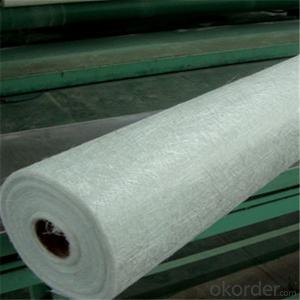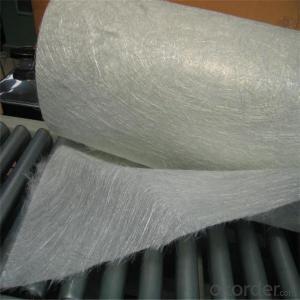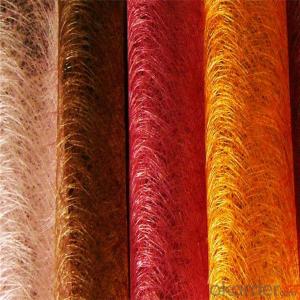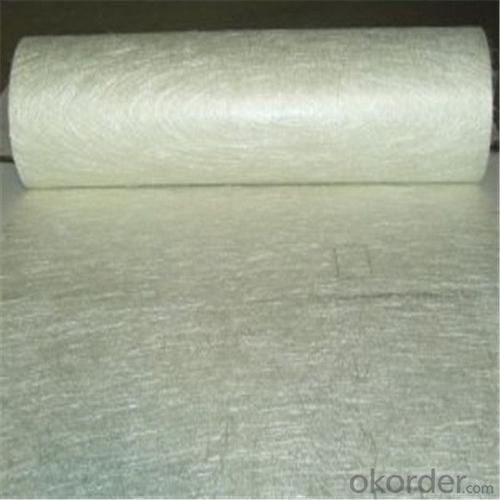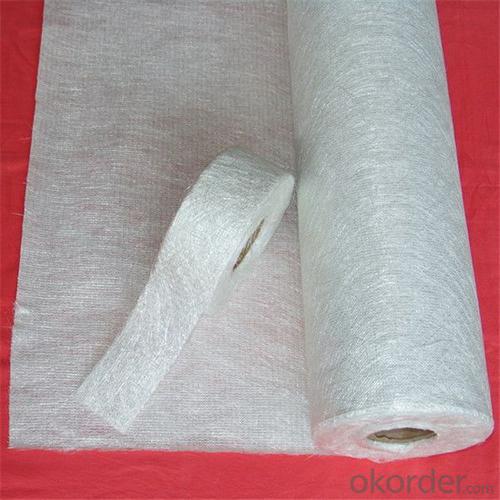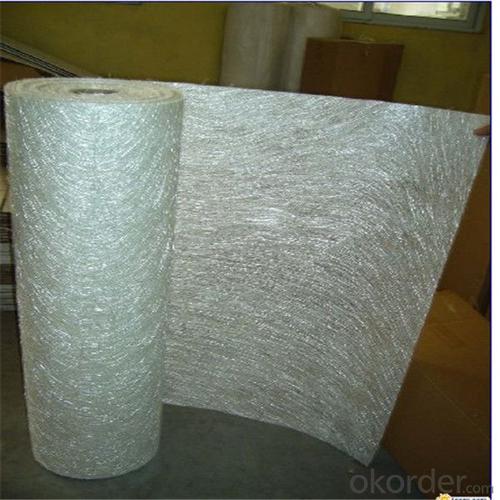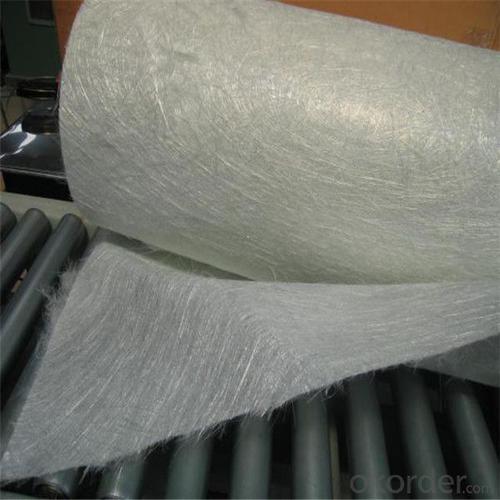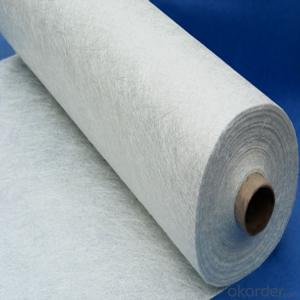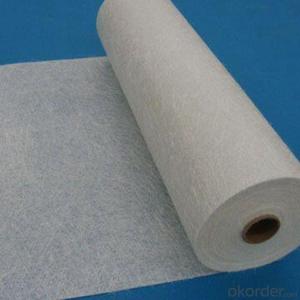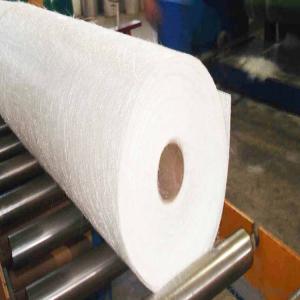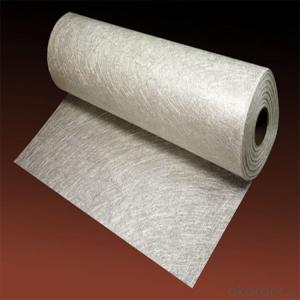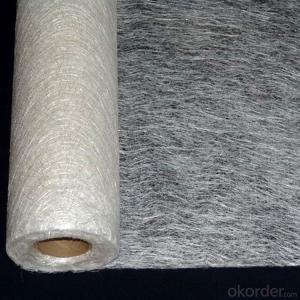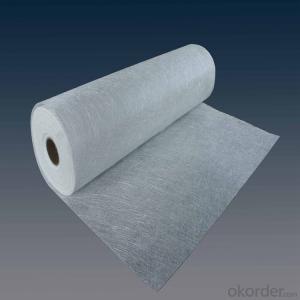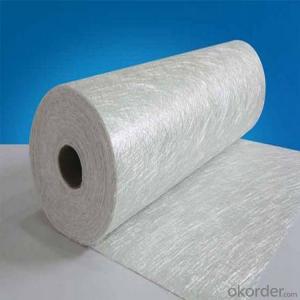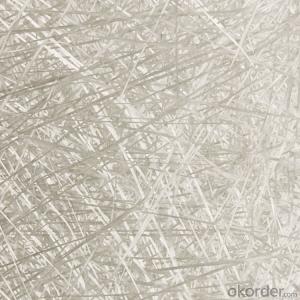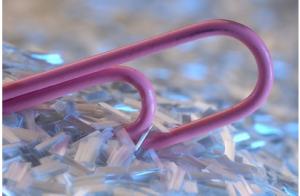Epoxy Resin on Fiberglass Chopped Strand Easy Operation Building Materials Mat
- Loading Port:
- Tianjin
- Payment Terms:
- TT OR LC
- Min Order Qty:
- 100 m.t.
- Supply Capability:
- 20000 m.t./month
OKorder Service Pledge
OKorder Financial Service
You Might Also Like
Quick Details
| Technique: | Chopped Strand Fiberglass Mat (CSM) | Dimensions: | according to customer's request | Mat Type: | Stitch Bonding Chop Mat |
| Fiberglass Type: | E-Glass | Softness: | middle | Place of Origin: | Jiangxi, China (Mainland) |
| Brand Name: | cnbm | Model Number: | CSMEP100,CSMEP120,CSMEP200,etc | Product: | Cooling Tower Building Glass Fiber Fiberglass Chopped Strand Mat(csm) |
| Color: | White | Width: | 1040mm,1250mm,ect. | Area weight: | 225-900g/m2 |
| Application: | filament winding,panpel,ect |
Packaging & Delivery
| Packaging Details: | Each roll in one polybag then to an export carton. |
| Delivery Detail: | Within 18 days after confirm order |
Fiberglass Chopped strand mat
Powder Strand Mats Product Features:
1) Uniform density ensures consistent fiberglass content and mechanical properties of the composites products.
2)Uniform powder distribution ensures good mat integrity, little loose fibers and small roll diameter.
3) Excellent flexibility ensures good mold ability with no spring back at sharp angles.
4)Fast and consistent wet-out speed in resins and rapid air lease reduce resin consumption and production cost and enhances productivity and mechanical properties of the end products.
5)The composite products have high dry and wet tensile strength and good transparency.
Picture
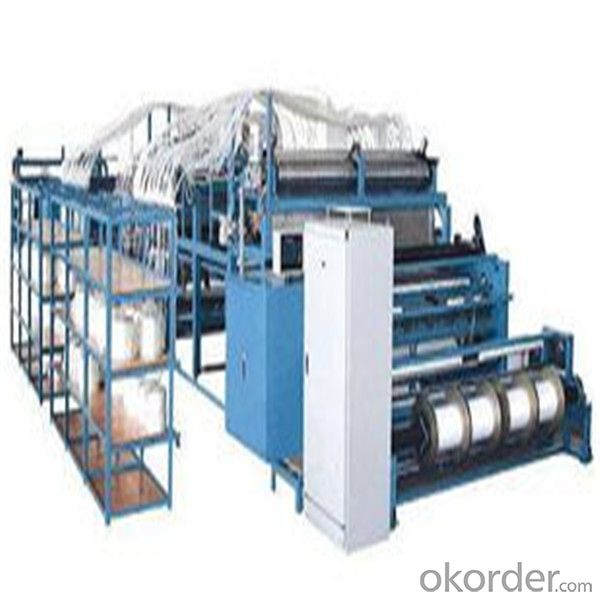
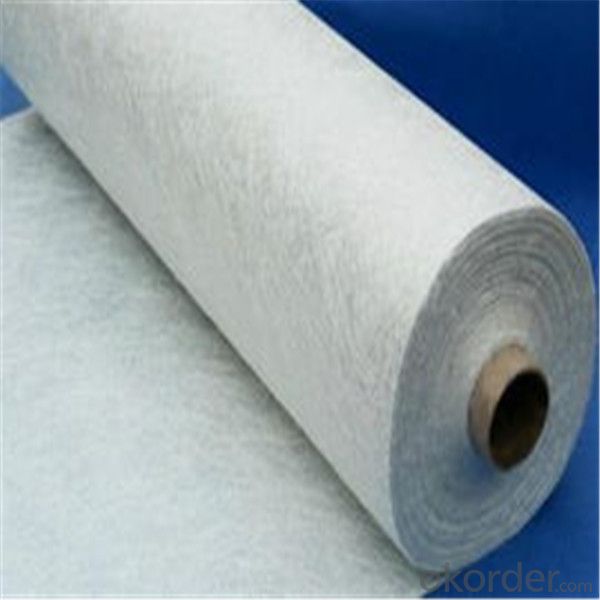
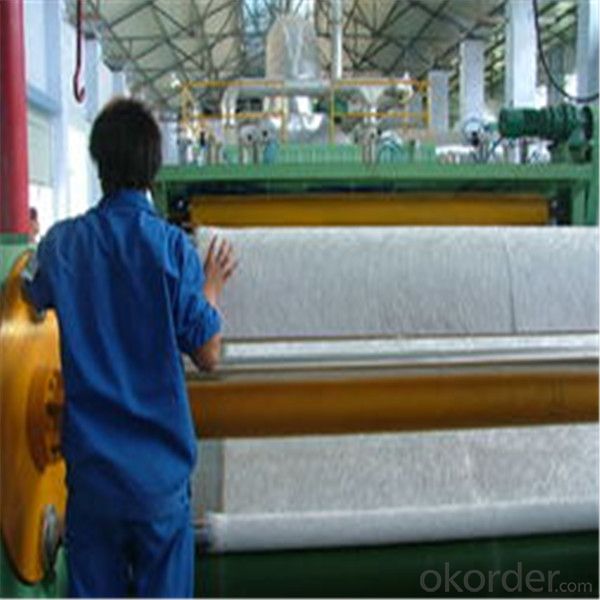
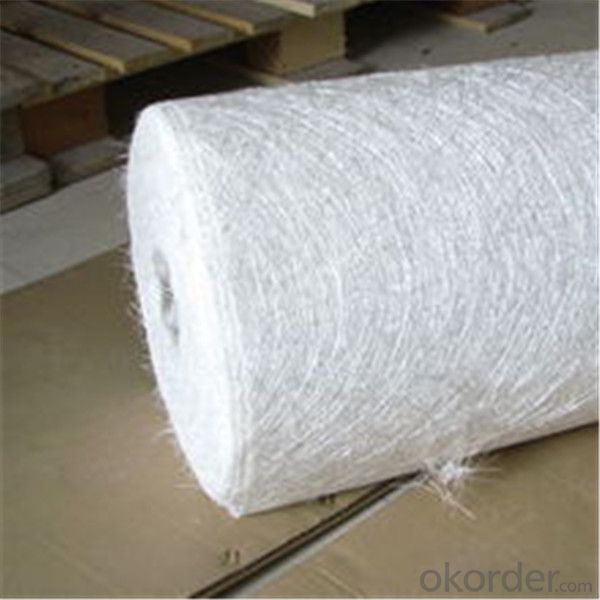
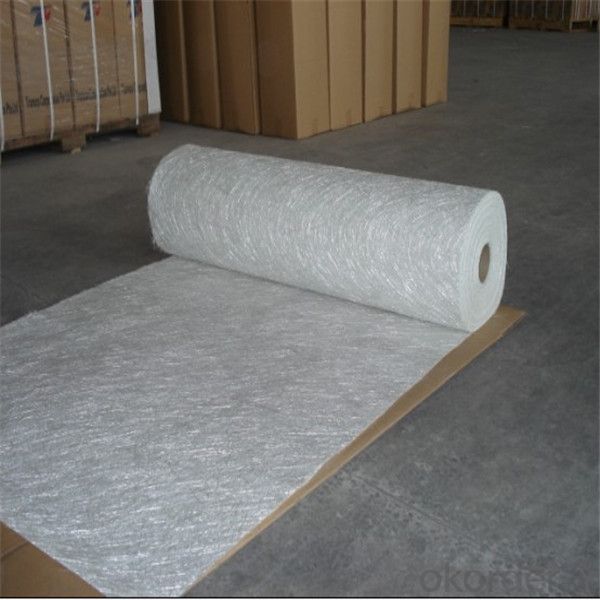
- Q: What are the typical thermal expansion properties of chopped strand composites?
- The thermal expansion characteristics of chopped strand composites can vary depending on the materials and manufacturing process employed. Generally, chopped strand composites exhibit lower thermal expansion coefficients compared to traditional metals. Chopped strand composites consist of reinforcing fibers, such as fiberglass or carbon fibers, combined with a polymer matrix, like epoxy or polyester. These fibers provide strength and rigidity to the composite, while the matrix acts as a binder and safeguards the fibers against external elements. The thermal expansion properties of chopped strand composites primarily depend on the thermal expansion coefficients of the fibers and the matrix material. For instance, fiberglass has a relatively low thermal expansion coefficient, resulting in minimal expansion and contraction with temperature changes. This attribute contributes to the dimensional stability of chopped strand composites, distinguishing them from metals with higher thermal expansion coefficients. Furthermore, the choice of polymer matrix in chopped strand composites can also influence their thermal expansion properties. Different polymers possess varying thermal expansion coefficients, allowing the selection of a specific matrix material to optimize the composite's overall performance and thermal expansion characteristics. Overall, chopped strand composites generally demonstrate lower thermal expansion properties when compared to metals, rendering them appropriate for applications where dimensional stability is crucial. However, it is worth noting that the precise thermal expansion properties may vary depending on the specific materials and manufacturing processes employed. Therefore, consulting the manufacturer or referring to technical specifications is essential for accurate information.
- Q: Can fiberglass chopped strand be used in the production of water pipes?
- Indeed, fiberglass chopped strand can be effectively utilized in the manufacturing of water pipes. Fiberglass proves to be an extremely versatile material that boasts numerous advantageous properties for the production of water pipes. Its exceptional strength and rigidity render it highly suitable for effectively managing the pressure and stress associated with water distribution systems. Furthermore, fiberglass possesses an inherent resistance to corrosion, enabling it to endure exposure to a wide range of chemicals and minerals present in water without experiencing any deterioration. Moreover, its lightweight composition facilitates easier handling and transportation throughout both the production and installation processes. In addition to these qualities, fiberglass exhibits excellent insulating capabilities, thereby facilitating the maintenance of the desired temperature of the water coursing through the pipes. Ultimately, incorporating fiberglass chopped strand into the manufacturing of water pipes can yield infrastructure that is not only durable and long-lasting, but also consistently reliable for the distribution of water.
- Q: Is fiberglass chopped strand compatible with different surface treatments?
- Different surface treatments are compatible with fiberglass chopped strand. Fiberglass chopped strand, being a versatile material, can be utilized with various surface treatments to enhance both its performance and appearance. Common surface treatments encompass painting, coating, laminating, and gel coating. These treatments serve to enhance the adhesion, durability, and resistance of the fiberglass against factors like UV radiation, chemicals, moisture, and abrasion. Moreover, the compatibility of fiberglass chopped strand with diverse surface treatments allows for customization and versatility in numerous applications, such as the automotive, construction, marine, and aerospace industries.
- Q: Does fiberglass chopped strand have any moisture resistance?
- Indeed, fiberglass chopped strand exhibits a degree of resistance to moisture. Unlike materials like wood, fiberglass naturally repels water and does not readily absorb moisture. Nevertheless, it is crucial to acknowledge that fiberglass can still undergo some level of moisture absorption over an extended period, especially if it lacks adequate sealing or coating. This may result in potential problems like delamination or weakened structural integrity. Consequently, it is advisable to employ suitable coatings or finishes to augment the moisture resistance of fiberglass chopped strand in situations where prolonged exposure to moisture is anticipated.
- Q: What are the typical water absorption characteristics of chopped strand composites?
- The typical water absorption characteristics of chopped strand composites can vary depending on various factors such as the type of resin used, the fiber content, the manufacturing process, and the quality of the composite. However, in general, chopped strand composites have relatively low water absorption compared to other types of composites. The water absorption of chopped strand composites is primarily influenced by the resin matrix. Commonly used resins such as polyester, vinyl ester, and epoxy have inherent water resistance properties. These resins form a barrier that limits the penetration of water into the composite structure. As a result, chopped strand composites tend to have low water absorption rates. Fiber content also plays a role in water absorption characteristics. Higher fiber content in the composite can enhance its resistance to water absorption due to the increased overall density and reduced resin content. The fibers act as reinforcement, creating a more impermeable structure. The manufacturing process and the quality of the composite are also important factors. Proper curing and consolidation during manufacturing ensure a dense and well-bonded composite structure, reducing the potential for water absorption. Additionally, the presence of any voids, delaminations, or defects in the composite can increase water absorption as they provide pathways for water to infiltrate the material. It is important to note that even though chopped strand composites have relatively low water absorption, they are not completely impervious to water. Prolonged exposure to water or immersion in water under high pressure can still lead to some level of water absorption. Therefore, it is crucial to consider the intended application and take appropriate measures to protect the composite from excessive water exposure, such as through the use of coatings or sealants.
- Q: What are the typical quality control measures for fiberglass chopped strand composites?
- When it comes to fiberglass chopped strand composites, there are several typical quality control measures that are commonly employed to ensure the integrity and consistency of the final product. 1. Raw Material Inspection: The first step in quality control is to inspect the raw materials used in the production of fiberglass chopped strand composites. This includes checking the quality and specifications of the glass fibers, resins, and other additives to ensure they meet the required standards. 2. Process Control: Quality control measures are implemented throughout the manufacturing process to monitor and control various parameters such as temperature, pressure, and resin-to-fiber ratio. This helps to ensure that the manufacturing process is consistent and that the final product meets the required specifications. 3. Fiber Length and Distribution: The length and distribution of the chopped fibers play a crucial role in the mechanical properties of the composite. Quality control measures are employed to measure and monitor the fiber length and distribution to ensure they meet the specified requirements. 4. Composite Thickness and Density: The thickness and density of the fiberglass chopped strand composites are important factors that affect their performance. Quality control measures are implemented to measure and monitor the thickness and density of the composites to ensure they meet the required standards. 5. Mechanical Testing: Various mechanical tests are conducted on the fiberglass chopped strand composites to assess their strength, stiffness, and other mechanical properties. These tests include tensile strength, flexural strength, impact resistance, and fatigue testing. Quality control measures ensure that these tests are conducted accurately and consistently. 6. Visual Inspection: Visual inspection is an important quality control measure for fiberglass chopped strand composites. Trained inspectors visually examine the composites for any defects, such as voids, delamination, or surface imperfections, and ensure they meet the required cosmetic standards. 7. Dimensional Control: Quality control measures are implemented to measure and monitor the dimensions of the fiberglass chopped strand composites, such as length, width, and thickness, to ensure they are within the specified tolerances. 8. Packaging and Labeling: Quality control measures are also applied to the packaging and labeling of the fiberglass chopped strand composites. Inspections are conducted to ensure that the packaging is intact and protects the composites during transportation, and that the labeling accurately reflects the product specifications. Overall, these quality control measures help to ensure that fiberglass chopped strand composites meet the required standards for strength, durability, dimensional accuracy, and appearance. By implementing these measures, manufacturers can deliver high-quality products to their customers and maintain their reputation in the market.
- Q: What is the typical diameter of fiberglass chopped strand?
- The typical diameter of fiberglass chopped strand varies depending on the specific application and manufacturer. However, in general, the diameter of fiberglass chopped strand ranges from approximately 10 to 20 micrometers. This diameter is chosen to provide a good balance between strength and flexibility for use in various industries such as automotive, construction, and aerospace. The specific diameter chosen for a particular application will depend on factors such as the desired strength and durability requirements, as well as the manufacturing process and end-use application.
- Q: How does the water absorption of the chopped strand affect its performance?
- The water absorption of chopped strand can significantly impact its performance. When fibers absorb water, they can become weakened and lose their structural integrity. This can lead to reduced mechanical properties and overall performance of the chopped strand, such as lower tensile strength and stiffness. Additionally, water absorption can also increase the weight of the material, potentially affecting its handling and processing characteristics. Therefore, minimizing water absorption is crucial to maintain the desired performance of chopped strand.
- Q: Can fiberglass chopped strand be used in the production of lightweight panels?
- Indeed, lightweight panels can be produced using fiberglass chopped strand. This particular reinforcement material comprises small strands of glass fibers. Typically, these fibers are cut into short lengths and then mixed with a resin matrix to generate a composite material. The utilization of fiberglass chopped strand in lightweight panel production offers numerous benefits. Firstly, fiberglass is renowned for its exceptional strength-to-weight ratio. Consequently, it provides outstanding structural integrity while minimizing the weight of the panels. This proves especially advantageous in industries like automotive and aerospace, where weight reduction is critical. Furthermore, fiberglass chopped strand can be easily molded into intricate shapes, enabling the creation of panels with elaborate designs. This flexibility in shaping also allows for the customization of panels to meet specific requirements, such as withstanding high temperatures or resisting corrosion. Additionally, fiberglass chopped strand is a cost-effective alternative when compared to other reinforcement materials. This affordability factor contributes to its popularity in lightweight panel production. The material is readily accessible, and its production process is relatively straightforward, ensuring efficient mass production. To conclude, fiberglass chopped strand is certainly suitable for the production of lightweight panels. Its high strength-to-weight ratio, shaping versatility, cost-effectiveness, and availability make it a viable option for various industries seeking durable yet lightweight panels.
- Q: How is the fiber content consistency of fiberglass chopped strand ensured?
- The fiber content consistency of fiberglass chopped strand is ensured through various quality control measures. Firstly, during the manufacturing process, the fiberglass strands are carefully selected and processed to ensure uniformity in length and diameter. This is crucial in maintaining consistent fiber content throughout the chopped strands. Secondly, the chopped strands go through a thorough inspection before they are packaged and sent for distribution. This inspection involves randomly sampling the strands and evaluating their fiber content using specialized equipment. Any strands that do not meet the required fiber content specifications are discarded, ensuring that only high-quality and consistent chopped strands are delivered to customers. Additionally, manufacturers often employ statistical process control techniques to monitor and control the fiber content consistency. This involves regularly sampling and testing the chopped strands at various stages of the production process. By analyzing the data obtained from these tests, manufacturers can identify any variations in fiber content and take corrective actions to maintain consistency. Furthermore, manufacturers may also conduct regular audits and quality checks of their production facilities to ensure that all processes and equipment are functioning properly. This helps to identify any potential issues that may affect the fiber content consistency and allows for prompt corrective measures to be taken. Overall, a combination of stringent quality control measures, inspections, statistical process control techniques, and regular audits ensures that the fiber content consistency of fiberglass chopped strand is maintained at a high level. This consistency is crucial in guaranteeing the performance and reliability of fiberglass products in various applications.
Send your message to us
Epoxy Resin on Fiberglass Chopped Strand Easy Operation Building Materials Mat
- Loading Port:
- Tianjin
- Payment Terms:
- TT OR LC
- Min Order Qty:
- 100 m.t.
- Supply Capability:
- 20000 m.t./month
OKorder Service Pledge
OKorder Financial Service
Similar products
Hot products
Hot Searches
Related keywords
